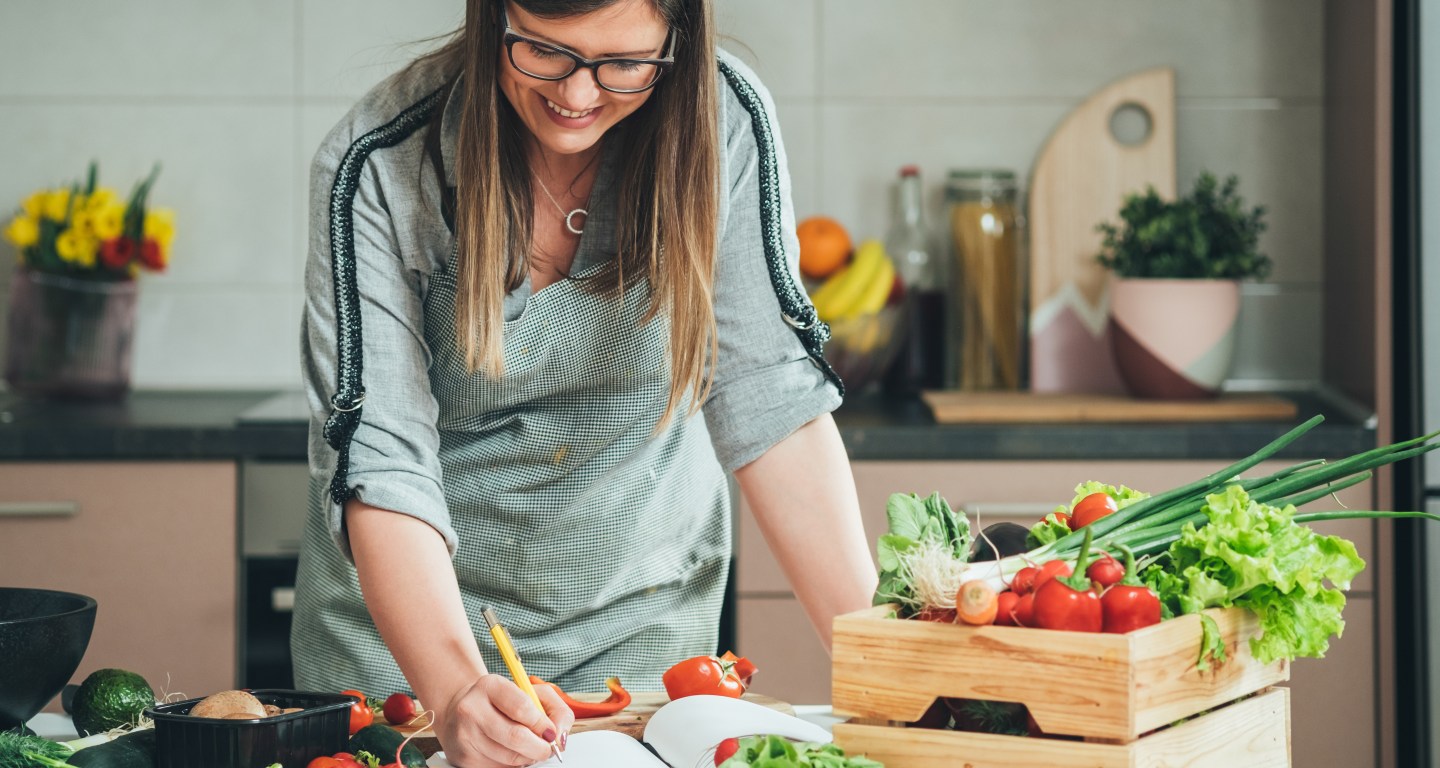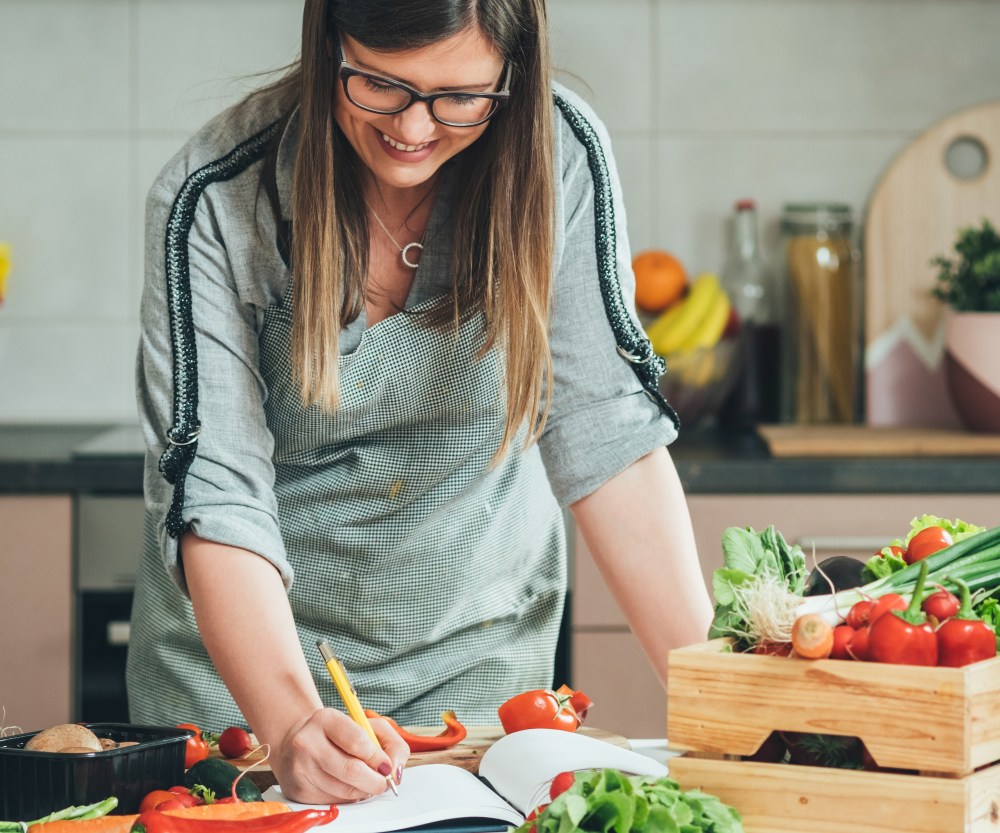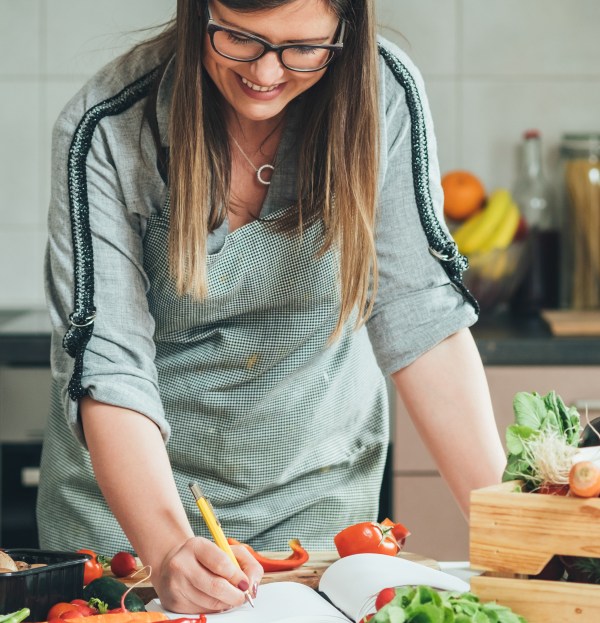Controlling blood glucose through better nutrition might sound challenging, but it doesn’t have to be when you follow these simple strategies and seek help when needed.
Certain food or drink options may be more nutritious and therefore more helpful for stabilizing blood glucose levels. Knowing more about the products you put into your body can help you maintain better control of blood glucose levels.
Making better food choices for blood glucose control
The Diabetes Plate Method from the American Diabetes Association (ADA) makes it easier to choose foods that improve blood glucose.[1] It provides straightforward guidance that closely mirrors that of the U.S. Department of Agriculture’s (USDA) MyPlate.[2]
To help balance nutrients and blood glucose, [1]the ADA’s Diabetes Plate Method recommends using a 9-inch plate and choosing:[3]
- Non-starchy vegetables: Fill half of your plate with non-starchy vegetables like broccoli, leafy greens, asparagus, carrots, zucchini, or yellow squash. These lower-carbohydrate veggies generally do not raise blood sugar very much. They’re also high in nutrients and fiber that your body needs.
- Lean proteins: Lean proteins[2] such as seafood, chicken, turkey, lean beef, lean pork, legumes, or tofu should take up a quarter of your plate. These options are lower in saturated fats, which may increase your risk of heart disease.[4]
- Nutrient-rich carbohydrates: Devote the remaining quarter of your plate to foods higher in carbohydrates. These include whole-grain foods like brown [3] rice, oats, and quinoa; whole-grain breads and pasta; starchy vegetables like potatoes, sweet potatoes, and peas; and beans and legumes. Fresh fruit is another tasty carbohydrate choice.
- Zero-calorie drinks: Choose water or another zero-calorie drink. Good options include unsweetened iced tea or sparkling water.[4]
Food labels: What to look for when you have diabetes
You may already know that the U.S. Food and Drug Administration (FDA) requires all packaged foods and drinks to have Nutrition Facts labels.[5] The information in these small rectangular boxes can help you make smarter food choices that help improve blood glucose.
The FDA has taken steps in the last decade to simplify nutrition facts. But that doesn’t mean that it’s always easy to know how a food or drink affects your body.
Here’s a quick rundown of key nutrition facts that people with diabetes need to look out for:[6]
- Serving size: The serving size reflects the amount of food or drink most people consume.[7] A serving might be 20 chips, an 8-ounce juice bottle, or 5.3 ounces of yogurt. Some product packages may have more than 1 serving, so it’s important to monitor how many servings you have. This info gives you a more accurate idea of the calories, carbohydrates, fats, and sugars you consume.
- Calories: You’ll find calorie information in big, bold numbers underneath the serving size. This number reflects the number of calories per serving. If you eat 2 servings, you’ll get double the calories and double the carbohydrate grams.
- Total carbohydrates: This number reflects a product’s total amount of sugar, starch, and fiber. The label may also break down each of these carbs separately. Minimally processed foods like whole fruits, vegetables, nuts, and seeds, often have more fiber and nutrients.[8]
- Sodium (salt): The amount of sodium in a product is important especially if you also have high blood pressure, heart disease, or kidney disease. The federal Dietary Guidelines for Americans recommend limiting daily sodium intake to less than 2,300 milligrams (mg).[9] That’s the equivalent of about 1 teaspoon of table salt per day.
- Daily value (%DV): The percent Daily Value shows how much of the daily recommended amount of a certain nutrient is in a single serving of that food. This information can be especially helpful if you have a condition like kidney disease. People with kidney disease may need to keep track of dietary sodium, potassium, or phosphorous.[10]
In summary: Help for better nutrition
You don’t have to figure out how to control blood glucose and eat healthier on your own. Remember, your health care team is on your side and they have access to resources you might not know about.
Now that you know more about controlling blood glucose through better nutrition, you may be curious about how to make smart shopping choices. The Sincerely Health nutrition tools in the grocery app can help.
You can start by downloading the grocery app. You’ll save $10* on groceries for creating an account. Next, create a personalized Sincerely Health nutrition profile to receive 1,000 points.*
Your nutrition profile allows you to:
- Set specific nutrition goals.
- Earn 10 points for items you purchase for a maximum 100 points per order (that’s 10 items at 10 points each).
Join Sincerely Health and set up your nutrition profile today.
Sources
[1] American Diabetes Association. What Is the Diabetes Plate Method? https://www.diabetesfoodhub.org/articles/what-is-the-diabetes-plate-method.html; American Diabetes Association. Tips for Eating Good. https://diabetes.org/food-nutrition/eating-healthy
[2] USDA. What Is MyPlate? https://www.myplate.gov/eat-healthy/what-is-myplate
[3] American Diabetes Association. What Is the Diabetes Plate Method? https://www.diabetesfoodhub.org/articles/what-is-the-diabetes-plate-method.html; American Diabetes Association. Tips for Eating Good. https://diabetes.org/food-nutrition/eating-healthy
[4] American Diabetes Association. Fats. https://diabetes.org/food-nutrition/reading-food-labels/fats
[5] FDA. What’s on the Nutrition Facts Label? Last reviewed March 5, 2024. https://www.fda.gov/food/nutrition-facts-label/whats-nutrition-facts-label
[6] American Diabetes Association. Reading Food Labels. https://diabetes.org/food-nutrition/reading-food-labels/making-sense-food-labels
[7] FDA. How to Understand and Use the Nutrition Facts Label. Last reviewed March 5, 2024. https://www.fda.gov/food/nutrition-facts-label/how-understand-and-use-nutrition-facts-label
[8] Harvard Health Publishing. Putting Processed Foods Into Perspective. Last reviewed April 1, 2024. https://www.health.harvard.edu/heart-health/putting-processed-foods-into-perspective#; Harvard T.H. Chan School of Public Health. Processed Foods and Health. Last reviewed August 2023. https://nutritionsource.hsph.harvard.edu/processed-foods/
[9] Dietary Guidelines for Americans. Top 10 Things You Need to Know about the Dietary Guidelines for Americans, 2020-2025. https://www.dietaryguidelines.gov/2020-2025-dietary-guidelines-online-materials/top-10-things-you-need-know
[10] American Diabetes Association. Chronic Kidney Disease (Nephropathy). https://diabetes.org/about-diabetes/complications/chronic-kidney-disease; National Institute of Diabetes and Digestive and Kidney Diseases. Eating Right for Chronic Kidney Disease. Last reviewed October 2016.



















